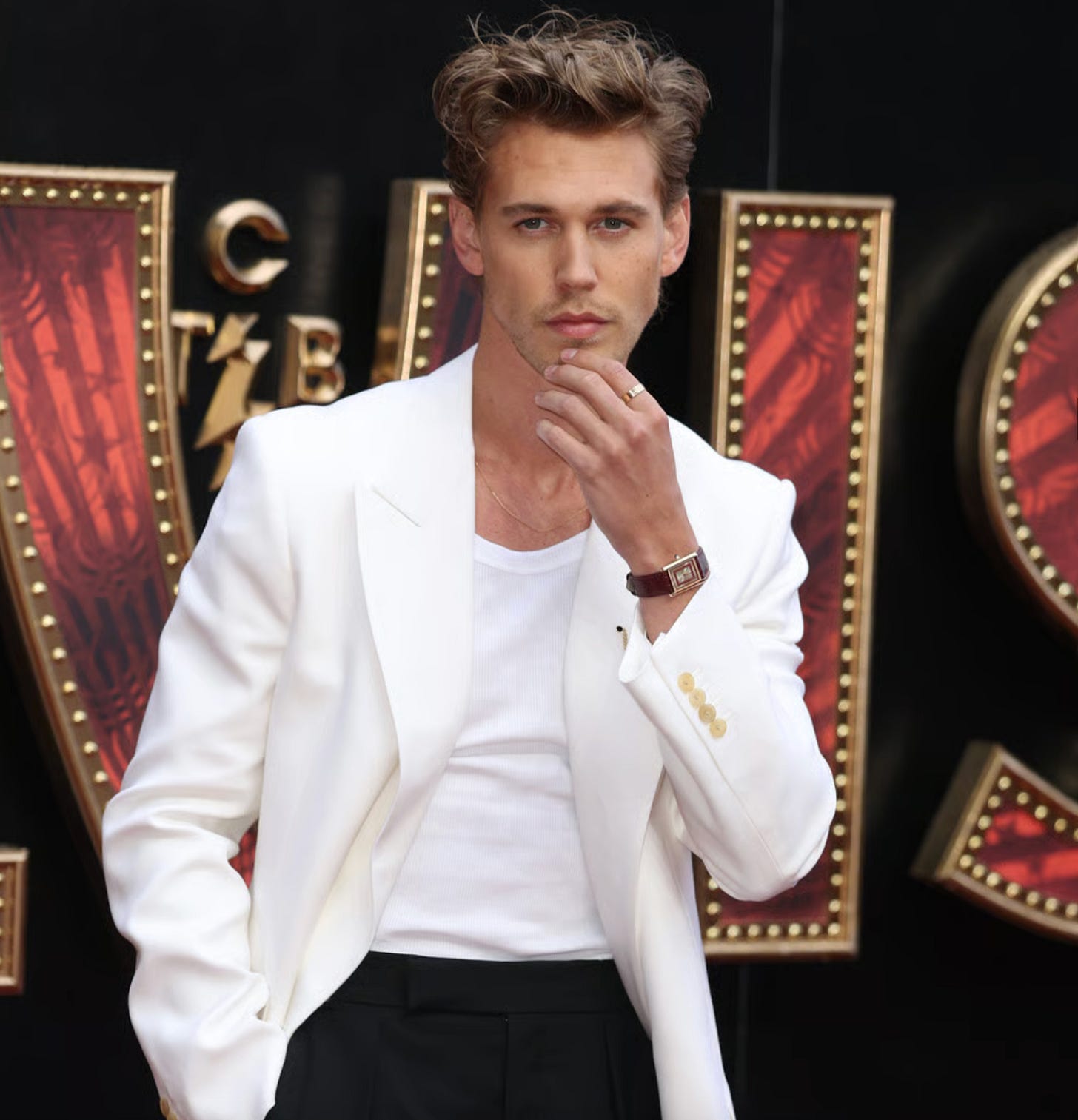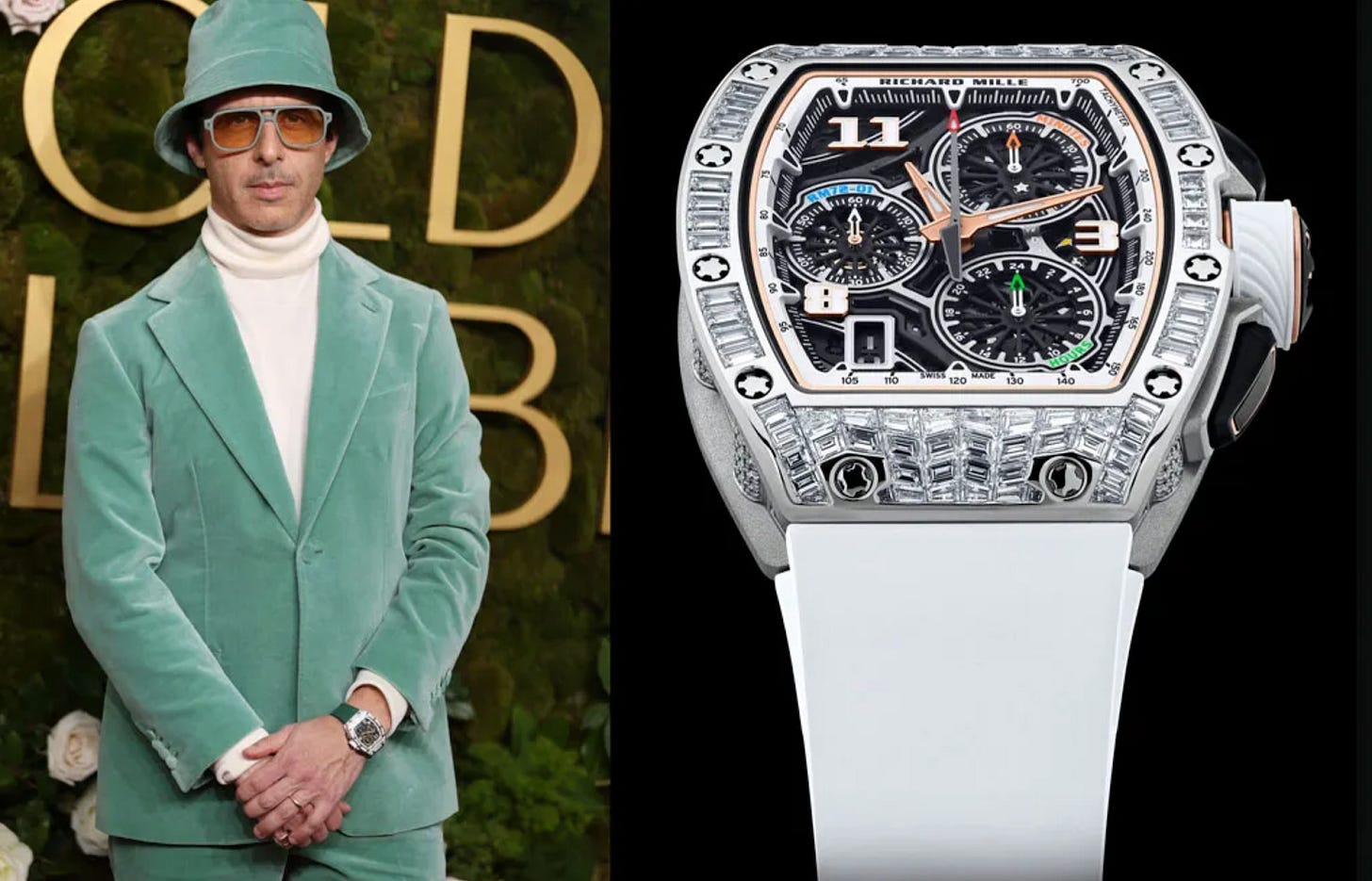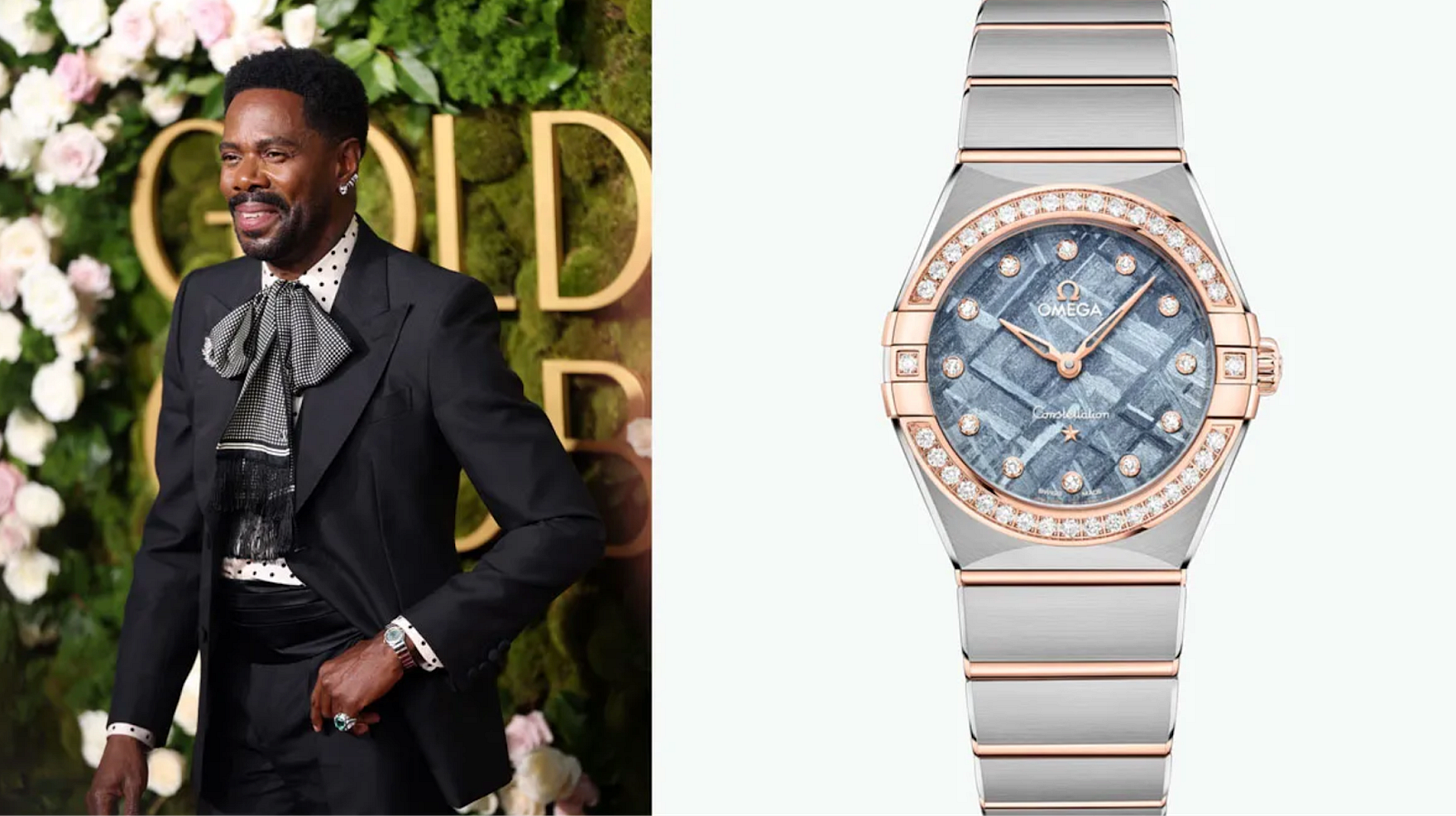Men Wearing Women's Watches: How Gender-Neutral Luxury Timepieces Are Redefining the Watch Industry
When Timothée Chalamet wore a 25mm Cartier Panthère, he quietly signaled a shift: male celebrities were embracing delicate watches, challenging decades of size-driven luxury and redefining the rules of masculine style.
Celebrity Men Leading the Gender-Neutral Watch Movement
The revolution arrived without manifestos or marching bands, announced instead by the barely audible tick of a 25-millimeter Cartier Panthère on Timothée Chalamet's wrist. While the world debated pronouns and bathroom signs, something far subtler was happening in the rarefied air of luxury consumption: men were quietly appropriating women's watches, and in doing so, dismantling a century of marketing orthodoxy with the precision of a Swiss movement.
This wasn't rebellion so much as evolution—the kind that happens when cultural tectonic plates shift just enough to create new ground. The men leading this charge weren't activists; they were aesthetes. Jeremy Strong at the Golden Globes, sporting a diamond-encrusted TAG Heuer originally intended for feminine wrists. Bad Bunny toying with his Patek Philippe ladies' model courtside. The Weeknd dripping in Piaget high jewelry at Cannes. Each appearance a small act of sartorial heresy that registered as barely a whisper in mainstream discourse, yet sent seismic waves through an industry built on the assumption that bigger was always better for men.
From 40mm to 45mm: The Masculine Arms Race
The luxury watch industry had spent decades in an arms race of masculine excess. Forty-two millimeters became the new forty. Then forty-five. The wrist became a billboard for virility, each timepiece a chrome-plated declaration of dominance. Hublot's Big Bang exploded onto scenes at 44mm. Breitling Navitimers ballooned to 46mm. Panerai Luminors stretched to 47mm and beyond. The market rewarded size with reverence, equating diameter with desirability in a feedback loop that seemed unbreakable—until it broke.
Instagram Culture's Impact on Watch Marketing
The first crack appeared not in boardrooms but on Instagram feeds. Gen Z arrived at luxury consumption with different rules, unencumbered by their fathers' need to signal through scale. They wore nail polish, carried designer handbags, and approached gender as a suggestion rather than a commandment. For them, the delicate proportions of a ladies' Royal Oak weren't emasculating but sophisticated—a knowing wink to those fluent in the language of understatement.
"Androgyny is in," observed watch expert Brynn Wallner, with the matter-of-fact tone of someone cataloging weather patterns. And like all successful cultural shifts, this one felt inevitable only in retrospect. The brands that had spent fortunes segmenting their market into pink and blue suddenly found themselves facing customers who refused the binary, opting instead for pieces that transcended traditional gender boundaries with the same casual confidence they brought to everything else.
Unisex Watches: Doubling the Addressable Market
The economics were irresistible. Cartier's Santos, originally designed for aviator Alberto Santos-Dumont in 1904, had always possessed an elegant ambiguity that made it suitable for any wrist. But only recently did the maison begin positioning it explicitly as unisex, tapping into what market research now confirms is the fastest-growing segment in luxury timepieces. The unisex category doesn't just represent a trend; it represents a doubling of addressable market without the expense of developing entirely new products.
Cartier's Unisex Positioning Strategy
This strategic pivot required a delicate recalibration of brand messaging. Gone were the advertisements featuring square-jawed pilots and race car drivers, replaced by campaigns that celebrated personal expression over prescribed masculinity. Cartier's Pierre Rainero articulated this philosophy with typical French directness: their watches were "intended to be agnostic to sexual orientation," designed around pure aesthetics rather than demographic targeting.
The transformation wasn't merely cosmetic. It represented a fundamental reimagining of luxury signaling itself. Where previous generations of affluent men had broadcasted their success through conspicuous consumption—the bigger the better—this new cohort preferred codes that required cultural literacy to decode. Wearing a "women's" watch became a form of stealth wealth, signaling not just financial means but sophistication, confidence, and an understanding of fashion's evolving language.
Celebrity Authenticity vs. Traditional Marketing
The celebrities driving this shift possessed something traditional luxury marketing had always struggled to manufacture: authenticity. When Chalamet paired his tiny Panthère with pizza in New York's East Village, the image resonated not because it was calculated but because it wasn't. The watch felt integral to his aesthetic rather than imposed by a stylist or publicist. This organic adoption proved more powerful than any campaign, creating aspirational desire through genuine personal style rather than manufactured aspiration.
The business implications rippled through the industry like dominoes falling in slow motion. Brands that had historically treated women's watches as afterthoughts—smaller versions of men's designs, often adorned with diamonds to justify their existence—suddenly found themselves with unexpected bestsellers. The Omega Constellation, long relegated to "ladies' collection" status, began appearing on male wrists with increasing frequency. Patek Philippe's traditionally feminine models gained cult followings among male collectors who appreciated their refined proportions and understated elegance.
Retail Adaptation to Gender-Fluid Consumers
Yet skepticism lingered, particularly among traditional retail channels unprepared for customers who defied their carefully constructed categories. Sales associates trained to guide men toward the largest available option struggled to adapt to requests for delicate timepieces. Some dismissed the trend as celebrity affectation, a temporary aberration that would fade once the novelty wore off.
They misunderstood the depth of the cultural shift. This wasn't fashion following celebrity; it was celebrity reflecting broader changes in how luxury consumption operates in an era of fluid identity. The same forces driving the success of gender-neutral fashion brands like Telfar and the rise of unisex fragrances were reshaping the luxury watch market, creating space for products that prioritized personal expression over demographic conformity.

The revolution's quiet nature was perhaps its greatest strength. Without fanfare or controversy, it simply made traditional gender categories in luxury goods seem suddenly antiquated. The future belonged not to bigger or smaller, masculine or feminine, but to designs so compelling they transcended such distinctions entirely.
As market research now confirms, the unisex segment commands the largest share of luxury watch sales—a vindication of the quiet revolution that began with a few bold wrists and ended with an industry transformation. The victors in this cultural shift weren't the loudest voices but the most perceptive, those who recognized that the most profound changes often arrive not with manifestos but with the simple act of choosing differently.
In the end, the quiet revolution succeeded precisely because it was quiet—allowing luxury consumption to evolve without the resistance that explicit challenges might have provoked. The future of luxury, it turns out, belongs to those confident enough to ignore the rules entirely.
Bibliography
Primary Sources
Hendren, Joshua. “The Male Celebrities Wearing Women’s Watches: Lionel Messi and Bad Bunny Sport Patek Philippe, Timothée Chalamet Rocks a Tiny Cartier Panthère, and The Weeknd Wore Piaget High Jewellery to Cannes.” South China Morning Post, October 13, 2023.
“The 12 Best Watches at the Golden Globes.” Robb Report, January 6, 2025.
Market Research & Industry Analysis
“Luxury Watch Market Analysis | Industry Forecast, Size & Report Insights.” Mordor Intelligence, 2025.
“Luxury Watch Market Share, Size 2025–30.” MarkNtel Advisors, 2025.
“The Rise of Unisex Watches.” Second Movement, March 28, 2025.
Expert Commentary & Industry Perspectives
Barrett, Cara. “Second Opinions: All Watches Should Be Unisex – And Here’s Why.” Hodinkee, December 23, 2021.
“Are Watches Gender-Neutral? Cartier Breaks Stereotypes.” The Hour Markers, March 17, 2024.
Cultural & Fashion Analysis
“Women’s Watches for Men: The Next Big Accessory Trend.” The Manual, August 19, 2023.
“Watches Are Cooler Than Ever—Just Ask the It-Girls Leading the Trend.” Marie Claire, January 8, 2025.
About the Author
Sergio Galanti is a journalist specializing in independent watchmaking and mechanical horology.






I have a thin wrist.
A few years ago, I wanted to try on a Zenith at a shop in Tokyo, but the clerk wouldn't let me, saying that it's a woman's watch. (But it fits me!)
Last week at a Tokyo dealer, I slipped on a Panerai 38 mm moonphase , also categorized as a woman's watch. The salesperson mentioned that it's a woman's watch, but didn't say anything about the watch's target gender beyond that one brief alert.